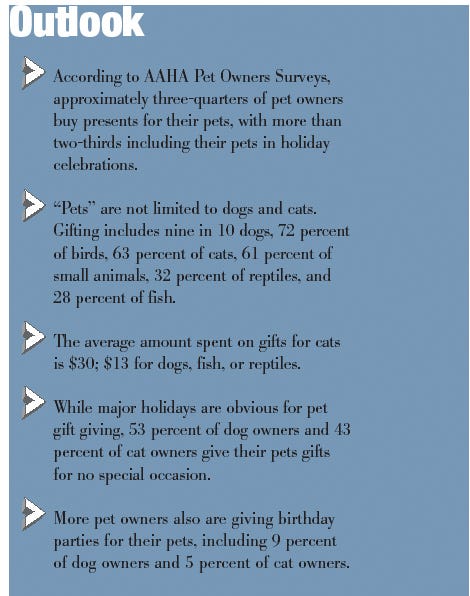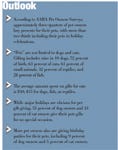]> Pet owners continue to show affection at traditional and nontraditional retail channels. While pet products used to be the fare of traditional retail
April 6, 2018

]>
Pet owners continue to show affection at traditional and nontraditional retail channels.
While pet products used to be the fare of traditional retail outlets (including pet specialty stores, supermarkets, and mass merchandisers, among other channels), nontraditional retail outlets (including department stores, wholesale clubs, dollar stores, and home improvement stores, among other channels) have been beefing up assortments, according to a new study from MarketResearch.com. The report reveals gift/luxury products, value-priced items, convenience-oriented products, private label, and licensed goods have spearheaded the pet product influx at nontraditional retailers. Pet supplies registered the biggest increase at these channels in 2004, and have been the fastest-growing category since 2000, according to the report. As in other categories, the push into nontraditional outlets is partly the result of ongoing consolidation in traditional pet channels and maintaining a foothold. What's more, Packaged Facts forecasts that sales of pet supplies through nontraditional retail channels will continue to outpace the market as a whole, posting an average annual gain of 8 percent through 2010, placing nontraditional sales at $4.2 billion. The Internet also will experience an increase in the low double digits, according to the report. 

But that seems to be good news for nontraditional outlets, as pet owners are spending their dollars (more often on impulse) there and finding some value items, as well as "luxury" pet items (leather collar/leash sets, jewelry, plush beds, and botanical fragrances) from well-known fashion designers Chanel, Burberry, Coach, Gucci, L.L. Bean, Nine West, and Ralph Lauren.
So, who are some of these pet lovers? For those ages 45 to 54 and ages 55 to 64, the report finds they are living in single-person households; are employed part time; and skew upscale in terms of education but not necessarily income. They also tend to shop in the "other outlets" portion of nontraditional retail channels. Suggestions here include interactive products, and products that make taking care of the pet easier (ergonomic brushes developed with over-50 fingers in mind and health products with label type large enough to be read by over-50 eyes). The Internet shopper contrasts sharply: ages 25 to 34 and 45 to 54. This shopper regionally skews to the Northeast and Pacific; full-time employment; more often single; and a strong income level of $100,000 or more, as well as those in the $50,000 to $74,999 range. These shoppers appreciate high-tech products and other premium products and are less constricted by pricing considerations, with guilt about leaving their pets at home a motivator for higher-ticket purchases.
You May Also Like






